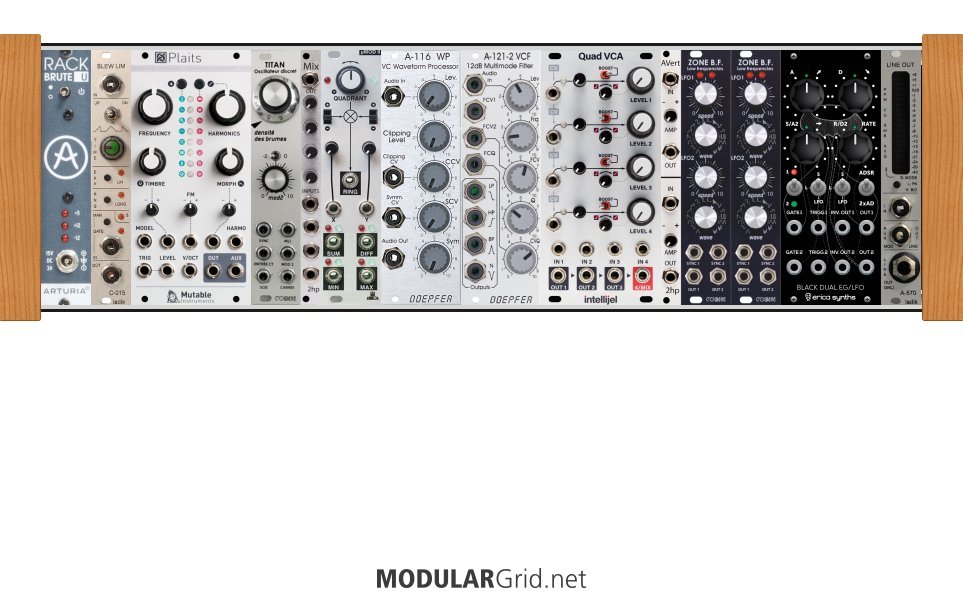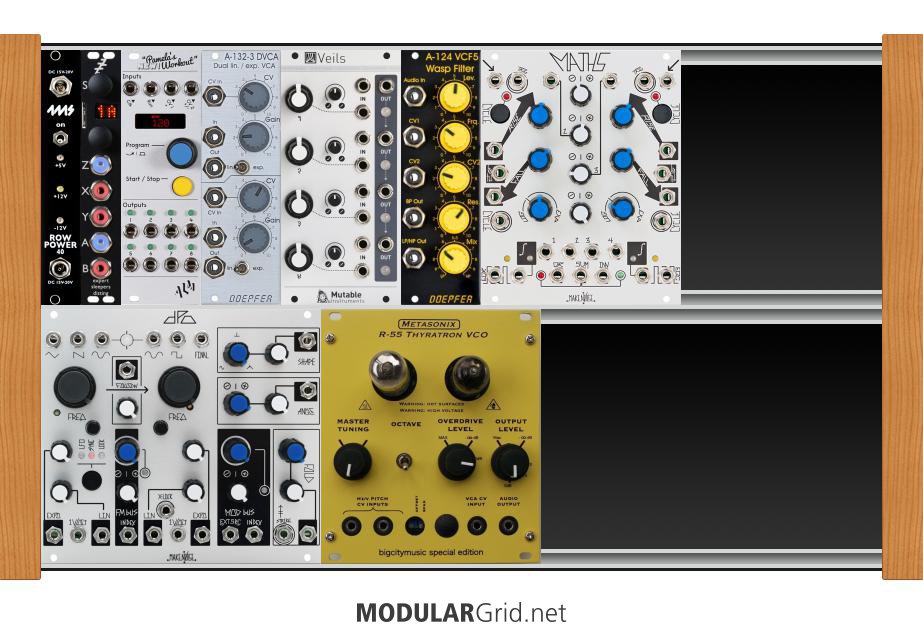...instead of a DIY kit, which means that you build the module yourself from directions, a bare PC board, individual electronic components, a panel and controls, and wire the whole mess up yourself with lots of soldering. Right. That's more what 'DIY' means 'round these parts, pilgrim.
Gotcha! No worries, I saw some folks online who build their cases, fabricate modules from scratch on bare PC boards but that is way beyond my technical ability I am more a music guy than an electronics engineer :-)
OK, enough John Wayne for one day there...basics for under $1000, if possible, and definitely sub-$2000. Can it be done? Mmmmaybe. The initial stumbling block there involves the case and power supply, and while you can 'Also, one neglected bit here are power distro boards. Having filtering on the distribution rails is critical, as it helps reduce induced crud and noise on the rails as well as potential crosstalk between modules connected to it.
Understand I will make sure the case and power supply are rock solid.
Right now, the best start-up case value is probably Arturia's Rackbrute 3U, which gives you a nice one-row cab with 88 hp (83 after their power supply goes in) and a consistently well-built power supply with ample amperage capacity for that single row. So, let's build with that.
Cool yeah these look nice as well as the 6U versions. Also looking at the Make Noise 3U 104HP Skiff case and power supply.
Next, you'll need sources. These are the various 'generators' that output raw audio signals at the head of the chain. One is OK...but two is better, because there's a lot that can be done by syncing, crossmodulating, and detuning them against each other to achieve useful results beyond what most single VCOs can do. However, what I suggest is a fairly complex VCO as one, and something simpler as the other; this gives you a 'voice' VCO and a 'modulation' VCO, which works well in the way I mentioned above. Follow this with a mixer to combine the signals, but also add in a ring modulator so that the VCOs can be combined to create complex sum-and-difference sideband FM, if desired (if? hell, you'll desire it, no doubt!). That's the 'generator' stage.
So at minimum 2 VCO modules, one basic and one multi functional like those from Make Noise and Doepfer right?
Then we head into 'modifiers', things which alter timbral complexity and impose amplitude changes. Namely, filters, waveshapers, and VCAs. For a starting cab, one VCF with some interesting tricks is fine, as is a simple waveshaper. As for VCAs, though...this will find you wanting multiple VCAs, because some of these have uses for controlling control amplitudes as well as audio. Plus, if you can throw in a mixer, bonus. All easily done, as you'll see...
Yeah my Eurorack buddy here told me you can never have enough VCAs so thinking 3-4 to start will be helpful.
Next comes modulation sources, the 'controllers': LFOs and envelopes, plus a few other bits of trickery. Not many of these are needed for something this simple, but they're definitely key to making this work. And after that, 'processors', which includes any effects and the final mixer and output stage.
A combo LFO envelop would save space and could work to start with.
Basically, that's the block arrangement for ANY synthesizer: generator feeds modifier, both controlled by > 
Voila! Now, this is really basic, and while I couldn't bring it under $1000, it does come in at just under $2000 ($1923, to be exact, at normal retail prices).
Cool beans! Thanks for the walk through. I am playing around different builds and also using the VCV Rack open source software to learn the basics on patching different modules together before spending cash.
If you look, this one-row synth is laid out exactly like the above example, with a couple of extra bits, those being a slew limiter This build here : 2 VCOs, ring mod, waveshaper, VCF, 4 VCAs, 2 LFOs, 2 envelope generators (loopable), an output and a slew limiter, plus necessary mixing and attenuation for manipulating signal combinatins and levels. All you'd need to play this would be a keyboard that outputs CV and gate/trigger, such as Arturia's $119 Keystep, which also gives you a sequencer.
Yeah I am planning to pickup a Keystep or BSP with Korg SQ-1 sequencer possibly for controlling the Eurorack gear. Also looking into Elektron Octatrack for helping sample the output of the Eurorack modules. Analog Rytm for the drum synth and also to help manage analog gear but need to do more research on this.
So, this is how a beginning one-row should look: these 'blocks', this sort of signal-flow (which happens when you follow a cohesive build pattern, instead of dropping modules in aimlessly), and so on.
Rad far out man thanks! I have some time working with my home analog Moog Sub 37 and MicroKorg synths so not completely lost on what these gears do but isolating them in purity will teach me way more about how to do real synthesis as a learning experience and addicting albeit expensive hobby!
Also...take your time. More time spent with a resource like MG will allow you to examine all possibilities and
-- Lugia
Thank you Lugia you are awesome and I do appreciate you patience in helping a complete noob like myself on this path. Agree- better to research, learn, test before dropping cash.


